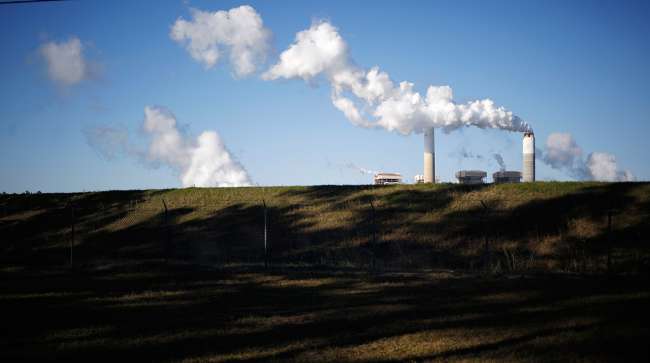Bloomberg News
US Greenhouse Gas Emissions Dip in 2024

[Stay on top of transportation news: Get TTNews in your inbox.]
U.S. greenhouse gas emissions and economic activity typically grow in tandem. But there are indications that the two are beginning to diverge, in an optimistic sign for the climate.
For the second year in a row, greenhouse gas emissions declined even as the economy expanded, according to a report by research firm Rhodium Group, with emissions falling by an estimated 0.2%. The divergence — emissions falling as economic activity rises — is a “cause for optimism,” said Ben King, an associate director at Rhodium Group’s energy and climate practice and author of the report.
“This is now pointing to, potentially, the beginnings of progress in decarbonization efforts helping to reduce emissions rather than just being a side effect of some of the broader structural change that’s going on in the economy,” King said.
U.S. greenhouse gas emissions overall have dipped about 20% since 2005, but the nation is still off track to meet goals set for the next decade. President Joe Biden’s goal of cutting emissions at least 50% by 2030 compared to 2005 would require the U.S. to slash emissions more than 7% annually.
Read our full report on our preliminary estimates for US emissions in 2024: https://t.co/AbwNgEtkc8 — Rhodium Group (@rhodium_group) January 9, 2025
That’s shaping up to be an uphill battle as President-elect Donald Trump has signaled intentions to dismantle policies meant to hasten decarbonization, including tax incentives from the Inflation Reduction Act and Environmental Protection Agency regulations.
Repealing the IRA entirely and rolling back regulations could limit emissions reductions, a separate analysis from the Rhodium Group found. A full repeal would be a difficult legislative task, though, and efforts to halt the energy transition may only go so far, with the clean tech industry having grown since Trump last left office.
“There’s likely continued decarbonization, whatever happens with the policy environment,” King said. “It’s just a question of how fast.”
Want more news? Listen to today's daily briefing above or go here for more info
The industrial sector drove the continued divergence of emissions from growth, with pollution falling by 1.8% due partly to the shift away from coal use and toward a reliance on natural gas and renewables. The oil and gas sector, meanwhile, emitted 3.7% less than the year before, according to the report. Cleaner production practices have helped limit the amount of methane emitted from production, processing and refining.
But a resurgence in travel stunted further progress as consumption expanded for both jet fuel and gasoline, pushing emissions 0.8% higher for the sector. Electricity used for air conditioning helped boost emissions from the power sector, even as solar and wind together generated more electricity than coal for the first time.
The Rhodium Group analysis uses preliminary economic and energy data, which the EPA won’t finalize until 2026.




